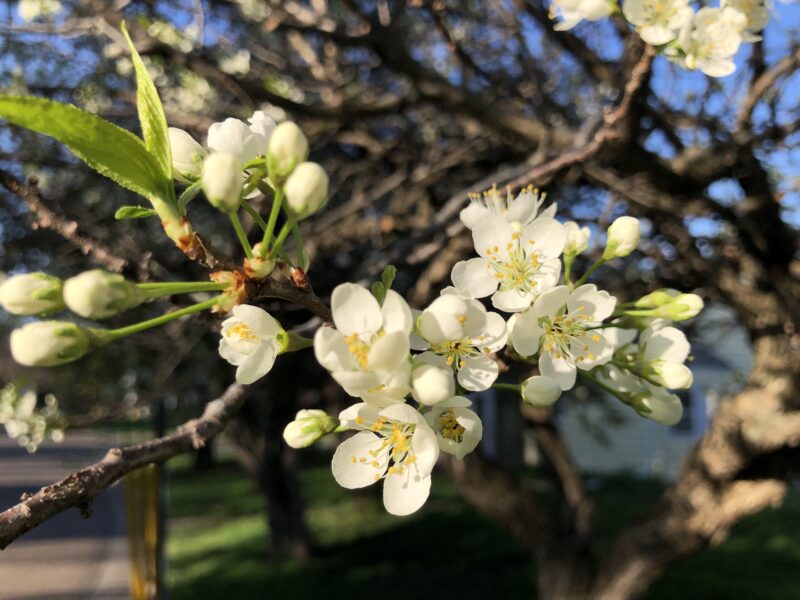
Insects are among nature’s more industrious workers, ensuring generations of bountiful and useful plants. We can help them do their work by creating a more pollinator-friendly yard. And when we do so, trees and shrubs have a strong role to play.
There are already many other benefits of trees. They serve as a carbon sink, helping to combat climate change by absorbing carbon dioxide. They mitigate the urban heat island effect, providing cooling shade. This has implications for heat stroke, asthma and other health problems. A sun-loving serviceberry might provide a canopy from 15- to 30-feet in diameter; maple or oak also serve as reliable shade trees providing upwards of 50- or 60-feet diameter cooling effects. And the canopy layer provided by a tree enhances the aesthetic appeal of a yard.
But many people don’t know how well trees shoulder the work in their ecosystem, adding value for wild bees and other pollinators. An oak tree, for example, supports many types of bird, caterpillar and insect species.
To support pollinators, a garden should have plants with staggered bloom times so pollen is readily available. During the spring, many flowering trees offer early food sources. In fact, a flowering tree can provide as much forage during the spring as an entire garden, according to Planting for Pollinators, a guide on creating residential pollinator habitat from Minnesota Board of Water and Soil Resources (BWSR). Crabapple, hawthorn, pagoda dogwood and plum (pictured here) are just a few examples that provide well for pollinators.
As far as choosing trees, remember that Minnesota stretches into three general planting zones, or biomes: Prairie (south and west), Coniferous (north) and Basswood (east). Choose from native species of flowering trees and shrubs that have co-evolved with local pollinators, adapting to each other, winter snow and summer heat, and natural predators. Again, BWSR’s Planting for Pollinators guide provides some ideas.
Finally, when thinking about the impact of your efforts to protect pollinators in your yard, remember that your efforts can play a role in a larger corridor of connected habitat. “Every homeowner can help rebuild pollinator corridors and one of the biggest impacts to achieve this would be adding trees and shrubs,” says Jennifer Moeller, a landscape designer and former project manager at Metro Blooms.
— Ken Jopp, St. Paul-based freelance writer
Additional Resources:
- Planting for Pollinators, downloadable guide from MN Board of Water and Soil Resources. Look for the section on trees and shrubs.
- Pollinator Beneficial Trees and Shrubs, overview from Blue Thumb
- “Trees improve human health and well-being in many ways,” in Research Review, US Forest Service Northern Research Station, April 2015.
- Trees and shrubs are one of many topics covered in our Blue Thumb Resilient Yards workshops, offered via webinar. Other topics include site planning, rain gardens native planting, protecting pollinators, and more.
- The Benefits of Trees, from the non-profit Canopy, summarizes how trees help in our urban settings.
